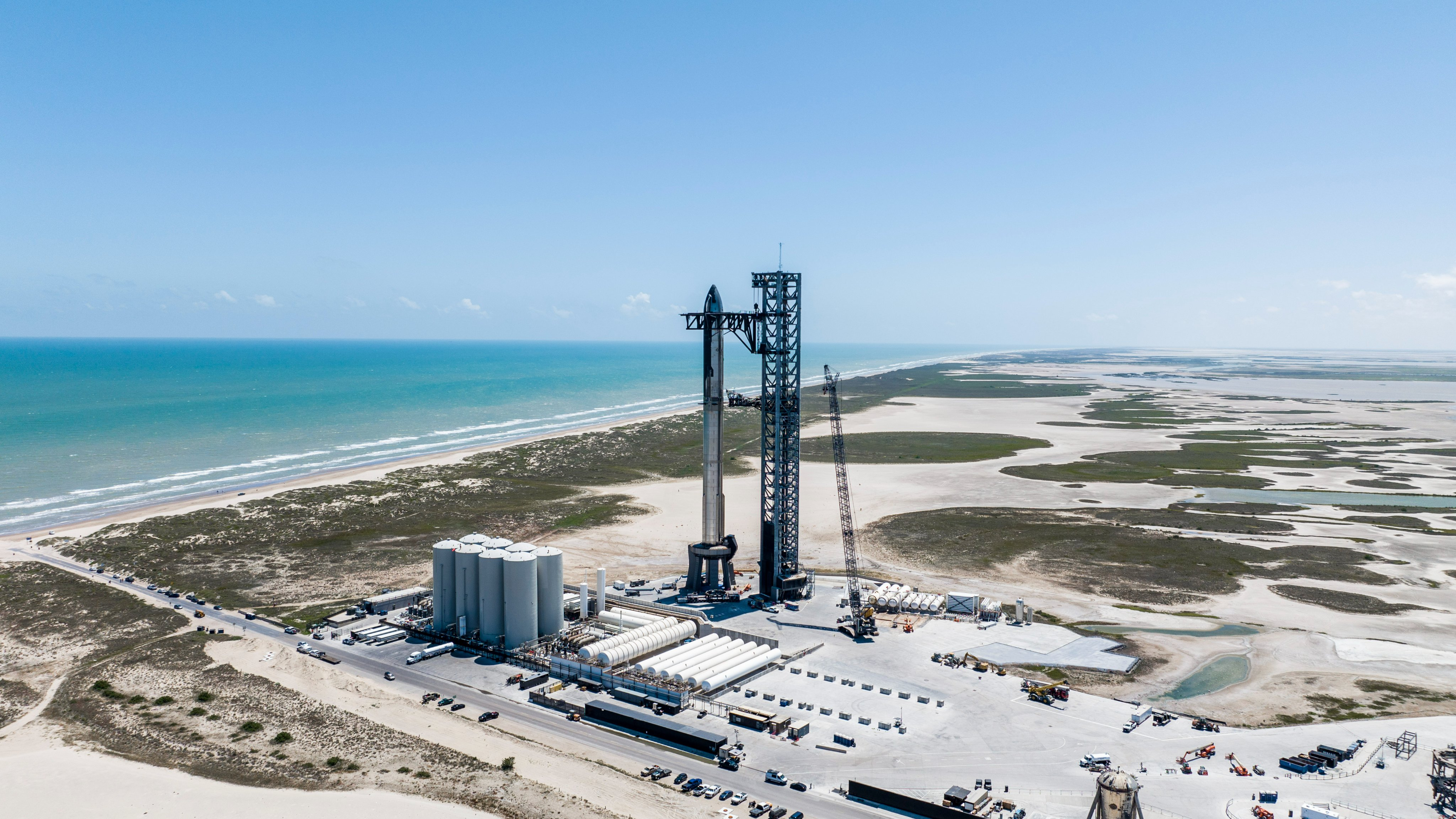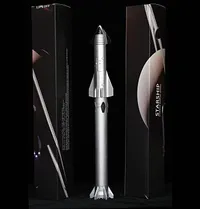SpaceX delays second Starship test launch to Nov. 18 to replace rocket part
We'll have to wait at least one more day to see Starship's second-ever flight.
SpaceX had been targeting Friday morning (Nov. 17) for the second test launch of its huge Starship rocket. But that's no longer the plan.
"We need to replace a grid fin actuator, so launch is postponed to Saturday," company founder and CEO Elon Musk announced today (Nov. 16) via X (formerly known as Twitter). (Grid fins are the waffle-iron-like structures on Starship's Super Heavy first stage, which help the booster steer its way back to Earth.)
Liftoff from SpaceX's Starbase site in South Texas is now scheduled to occur during a 20-minute window that opens Saturday at 8 a.m. EST (1300 GMT; 7 a.m. local Texas time), according to a company mission description. You can watch it live here at Space.com when the time comes.
Related: How to watch SpaceX's 2nd Starship launch on Nov. 18
Read more: How SpaceX's 2nd Starship rocket test launch will work

Starship is SpaceX's next-generation deep-space transportation system, which the company is developing to take people and cargo to the moon, Mars and beyond.
The vehicle consists of two elements, both of which are designed to be fully and rapidly reusable: The giant Super Heavy first stage and a 165-foot-tall (50 meters) upper-stage spacecraft known as Starship.
Breaking space news, the latest updates on rocket launches, skywatching events and more!
Together, the duo make the biggest and most powerful space vehicle ever built. When fully stacked, Starship stands nearly 400 feet (122 meters) tall.
A fully stacked Starship has flown just once to date, on an April 20 test flight from Starbase that aimed to send the upper stage partway around Earth. Splashdown was targeted for the Pacific Ocean near Hawaii, but the upper stage never got to fly freely; it failed to separate from Super Heavy, and SpaceX detonated the vehicle high above the Gulf of Mexico four minutes after liftoff.
Related: Incredible photos of SpaceX's 1st Starship launch
Starship Die Cast Rocket Model Now $69.99 on Amazon.
If you can't see SpaceX's Starship in person, you can score a model of your own. Standing at 13.77 inches (35 cm), this is a 1:375 ratio of SpaceX's Starship as a desktop model. The materials here are alloy steel and it weighs just 225g.
Note: Stock is low so you'll have to act quickly to get this.
The goals of Saturday's flight are broadly the same as those of the April 20 mission. If all goes according to plan, Super Heavy will come down for a water landing in the Gulf of Mexico about seven minutes after liftoff.
The Starship upper stage, meanwhile, will get close to orbital velocity as it makes a partial circuit of our planet. It will splash down near Hawaii about 90 minutes after launch.

Michael Wall is a Senior Space Writer with Space.com and joined the team in 2010. He primarily covers exoplanets, spaceflight and military space, but has been known to dabble in the space art beat. His book about the search for alien life, "Out There," was published on Nov. 13, 2018. Before becoming a science writer, Michael worked as a herpetologist and wildlife biologist. He has a Ph.D. in evolutionary biology from the University of Sydney, Australia, a bachelor's degree from the University of Arizona, and a graduate certificate in science writing from the University of California, Santa Cruz. To find out what his latest project is, you can follow Michael on Twitter.

